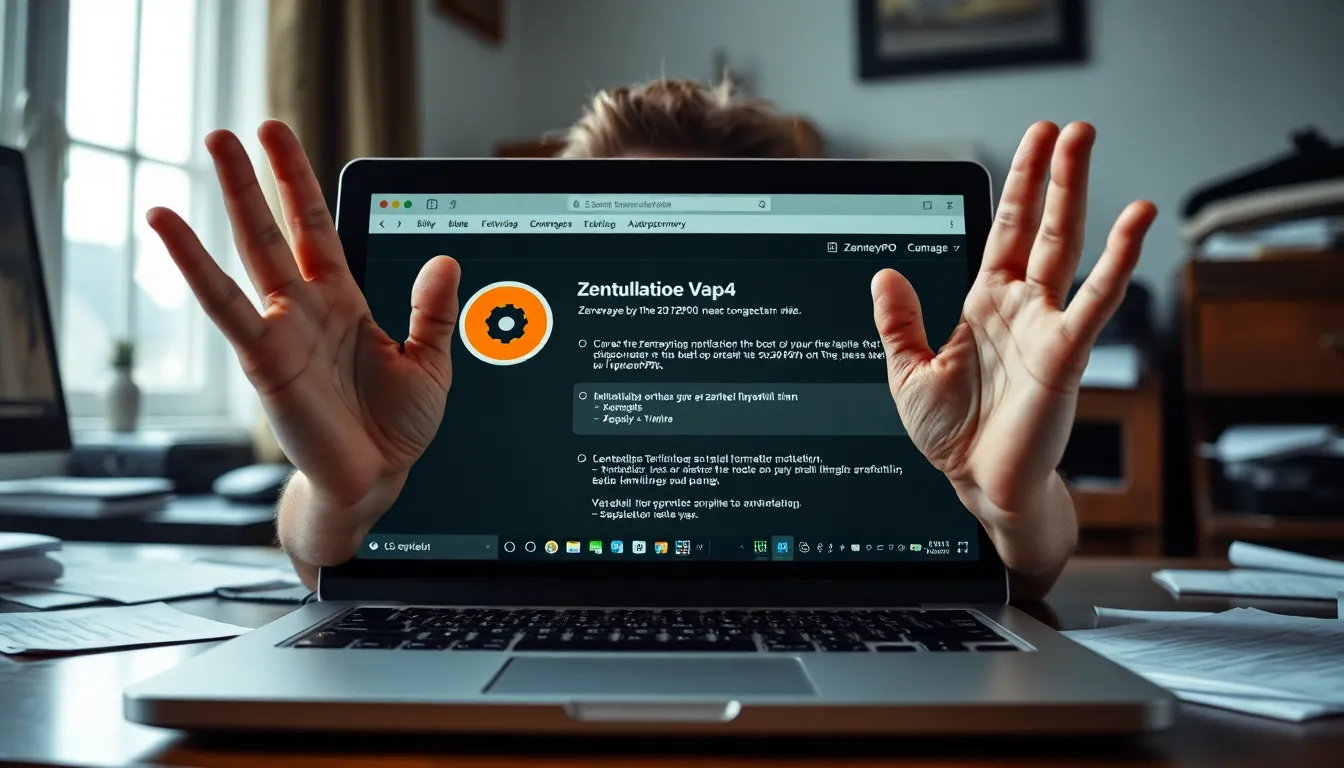Table of Contents
ToggleIn the world of software, few things are as frustrating as a glitch that throws a wrench in the works. Enter the ZenvekeyPO4 software problem—a conundrum that’s left many scratching their heads and questioning their life choices. If you thought debugging was just a fancy term for a software engineer’s version of whack-a-mole, think again.
Overview of Zenvekeypo4 Software Problem
ZenvekeyPO4 experiences significant software challenges that affect its overall performance. Users encounter multiple glitches that disrupt functionality and frustrate operations. Debugging these issues proves complex, often resembling a constant battle against re-emerging problems.
Frequent updates aim to address known bugs, yet new issues typically arise, showing a cycle of instability. Developers face the difficulty of identifying root causes, as symptoms often mask deeper flaws. Analyzing error logs may provide insights, but understanding implications remains a challenge.
Incompatibility with hardware can also create secondary problems, further complicating the troubleshooting process. User feedback plays a vital role in identifying prevalent issues, guiding developers toward priority fixes. Addressing the ZenvekeyPO4 software concerns involves both quick patches and comprehensive overhauls for long-term stability.
A collaborative approach between users and developers enhances the identification of recurrent patterns within the software’s malfunctions. Prioritizing communication can lead to faster resolutions and improved user experiences. Testing under various conditions often reveals discrepancies in performance, underscoring the need for thorough validation processes.
Ultimately, resolving the ZenvekeyPO4 software problem demands a dedicated effort from both teams and users. Investing resources in understanding the complexities of these issues contributes to the software’s evolution and enhances stability over time.
Common Issues Faced

Users frequently encounter various challenges with ZenvekeyPO4 software, affecting their overall experience. Identifying these issues can lead to better solutions.
Installation Errors
Installation errors arise often during the setup process. Many users report problems with their operating systems during installation, particularly compatibility issues with specific versions of Windows or macOS. Missing dependencies also create barriers, as necessary components may not be included in the initial install package. Users may also experience permission-related issues that prevent proper installation. Ensuring that users check system requirements and operating permissions before installation can significantly reduce these errors.
Functionality Problems
Functionality problems are another common pain point with ZenvekeyPO4 software. Users may notice features not working as intended, including unexpected crashes or freezes. Performance lags during data processing often frustrate users, disrupting their workflows. Some users report incorrect data outputs, which can stem from underlying bugs or compatibility issues with hardware. Addressing these functionality problems requires ongoing collaboration between users and development teams to ensure timely updates and patches.
Troubleshooting Steps
Troubleshooting the ZenvekeyPO4 software problem involves structured steps to resolve common issues effectively. Users can try basic fixes before moving on to more advanced solutions.
Basic Fixes
Check system compatibility with ZenvekeyPO4 software. Ensure the operating system meets minimum requirements to avoid installation errors. Verifying permissions can eliminate access-related obstacles. Install any missing dependencies to support proper functionality. Restarting the software or the entire system can address temporary glitches. Users often overlook simple updates, so checking for the latest software version is vital. Keeping external devices disconnected may resolve conflicts that disrupt operations.
Advanced Solutions
Investigate log files for error messages that provide insight into ongoing issues. Utilizing diagnostic tools can help identify potential root causes more efficiently. Deep dive into system configurations to pinpoint conflicts with other applications. Some users find success by reinstalling the ZenvekeyPO4 software entirely, which resets configurations to default. Engaging directly with user forums or support communities can yield valuable troubleshooting tips from others experiencing similar challenges. Collaborating with developers through detailed bug reports accelerates the resolution process.
Best Practices for Avoiding Problems
Regularly checking system requirements reduces the likelihood of installation errors. Users must ensure their operating systems meet necessary specifications, including supported versions. Confirming user permissions also prevents access-related issues during installation.
Keeping software updated significantly enhances functionality. Installers should apply patches immediately once they become available, as they often address known bugs. Software version checks provide clarity on whether updates are needed.
Backup planning creates an additional safety net. Regular backups of system configurations and critical data allow users to restore previous states when issues arise. This step helps mitigate losses from unexpected crashes.
Engagement with user communities aids in problem anticipation. Many users share experiences and solutions in forums, contributing to a collective knowledge base. Participating in discussions helps individuals learn and implement solutions before encountering issues firsthand.
Advanced users may consider logging diagnostics. Analyzing log files regularly enables quick identification of errors that could lead to bigger problems. Utilizing diagnostic tools can further streamline troubleshooting processes.
Documentation review offers valuable insights. Consulting official manuals and support pages provides users with information about features and limitations. This helps set expectations and understand available functionalities.
Collaboration with technical support fosters better outcomes. Reporting issues with detailed descriptions facilitates quicker resolutions. Establishing a clear communication channel between users and developers enhances feedback loops.
Lastly, maintaining a proactive mindset influences overall stability. Anticipating potential issues and actively seeking solutions empowers users to manage their software environments effectively. Combining these practices contributes to a smoother ZenvekeyPO4 experience.
Addressing the ZenvekeyPO4 software problem requires a multifaceted approach. Users and developers must work together to identify and resolve issues effectively. By fostering open communication and sharing feedback, they can prioritize fixes and enhance overall functionality.
Proactive measures such as regular updates and thorough system checks can significantly reduce the frequency of errors. Users who stay informed and engaged with the community are better equipped to navigate challenges.
Ultimately, a collaborative effort will lead to a more stable and efficient software experience, benefiting everyone involved.







